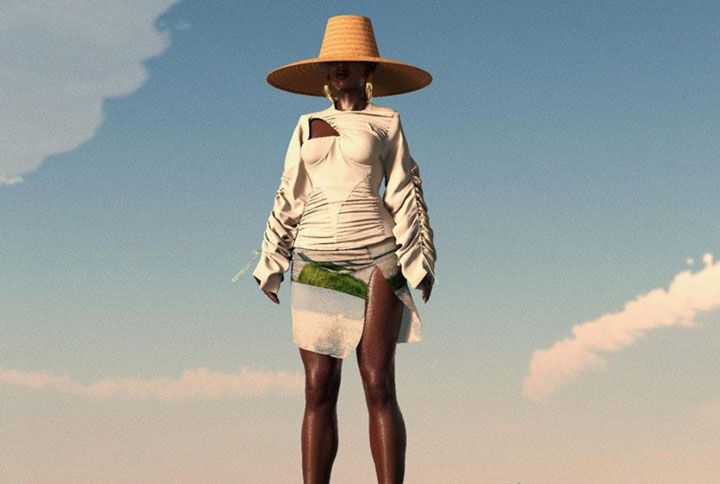The ongoing pandemic has changed the world overnight—digitalising everything and minimising human contact, just as the virus demands. Industries across are still adapting to the digital reality but fashion has long been a part of this journey. Even before COVID-19 was a thing, the fashion industry was slowly and steadily exploring the digital world and expanding its impact. Now as social distancing becomes key in curbing the spread of the virus, virtual reality and the digital realms are being explored to their maximum potential and the fashion industry is making full use. From virtual fashion weeks to one-of-a-kind, virtual shopping experiences and digitizing garments, it’s safe to say that the fashion industry is at the forefront of this new virtual reality.
Read on for all the ways fashion is exploring its digital counterparts:
1. Virtual fashion weeks
Nothing comes close to the experience one has at a real-time fashion show. All that glitz and glamour, the unique ambiences and being surrounded by extravagance is what makes them so special. However, given the obstruction caused by the pandemic, there is quite a bit of uncertainty around when a real fashion show will take place. Given the nature of fashion shows—attendees would need to be in close proximity of one another, think shoulder-to-shoulder, is not the ideal scenario one wants to be in, any more.
Technology has been the ultimate saviour—democratising fashion shows and digitalising them. Though physical fashion shows are unparalleled, virtual fashion weeks are not behind in providing that ethereal experience. With life-like models and garments, many luxury giants have turned to virtual fashion shows. Amidst the very first to go live with digital fashion weeks was Shanghai Fashion Week in March. The four-day digital fashion week was accessible to everyone and didn’t need a special invite. Luxury moguls like Diane von Furstenberg showcased their collection in Shanghai. Back in May, Anifa Mvuemba, founder of label Hanifa showcased her SS21′ collection via Instagram live. How? Against a pitch-black backdrop, Hanifa‘s hyper-realistic clothes walked the runway without being donned by models. The digital version of the garments could show the kind of textures and materials they were made of. And here’s what I have to say—kudos to what technology can do!
June witnessed the much-awaited London Fashion Week that tried and tested with their digital counterpart and was viewed by millions. Daniel Fletcher, Marques Almeida and Feng Chen Wan were amongst the few brands that presented their collections at LFW. This month, the fashion industry gears up, from the comfort of their home, for the digital iteration of Milan Fashion Week. Big names like Gucci are slated to showcase at this fashion week. Although the traditional way of dropping trends and showcasing new collections is immeasurable, digitalisation of fashion has given brands the tools to reduce the environmental impacts of fashion and has made the whole process a lot more cost-efficient. As mentioned previously, it has also democratised fashion with consumers outside of the fashion fraternity being able to access what was previously inaccessible.
2. Virtual shopping experiences
With social distancing norms in place for, no one really knows how long, it’s uncertain as to when in-store shopping, in its full capacity, will resume. Trying on previously-tried items and public gathering still remain a threat. Understanding the risk of it all, an increasing number of brands are adopting practices that allow for a seamless shopping experience from the luxury of your couch. Think, virtual mirrors and fitting rooms, personalised video calling and timely live streams.
Exhibit 1 includes Gucci‘s Gucci Live—video service that connects the brand’s staff to its clients and buyers, operating from a service centre in Florence. With a faux luxury store having TVs and cameras, the Italian fashion house is keeping in touch with its clients in the most digital and situation-friendly way possible. On the other hand, Dior is keeping up with the new reality by way of a virtual store. Their French website offers a 360-degree experience of their beauty store. From zooming on to any product to walking to the different sections of the store, the brand’s virtual store is as life-like as it gets. American brand Tommy Hilfiger showcased its summer 2020 collection via a live stream with guests from the fashion fraternity. The broadcast that went on for about 30 minutes allowed the viewers to ask live questions along with saving their favourite looks into a virtual shopping bag to purchase post the broadcast.
The pandemic is also making way for virtual fitting rooms to grow bigger and better. Bangalore-based AI company Bigthinx uses software that provides an exact experience of a trial room with LYFLIKE and LYFSIZE. Augmented mirrors, however, are not a recent phenomena and have been in the tests for a few odd years. YOOX Net-a-Porter Group in 2018 launched YooxMirror, a virtual styling mirror that let consumers try different styles on a pre-made avatar. However, the technology has now evolved to consumers being able to use their own avatars with their faces to try on clothing, mixing and matching clothes.
https://www.instagram.com/p/CBV4mV5gSlt/
3. Expansion of e-commerce
E-commerce is here to stay and only grow bigger and given the pandemic, people are relying heavily on minimal physical contact. During the peak times of the virus, brick-and-mortar sales suffered and online sales increased considerably. The recent most famous example includes fast-fashion giant Zara. With an aim to shut down 1000+ stores by 2022, the brand is set to build its e-commerce business and focus on online sales. It was a no-brainer that during a complete lockdown, consumers eagerly waited for online shopping to resume given the surge in the consumption of digital content.
To conclude, even in a corona-free world, social distancing norms may still prevail in reduced amounts. Even more, augmented reality comprising virtual mirrors and more will help reduce fashion’s carbon footprint. Fashion, in my personal opinion, has never been more democratised and will only amp up further.
What are your thoughts on this? Let me know in the comments below!
And don’t forget to follow @missmalinifashion on Instagram to never miss a style tip!


